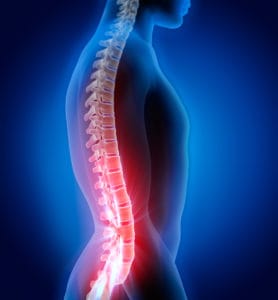01 Feb Seeking Spinal Cord Stimulation
Minimally invasive procedures, such as spinal cord stimulation, are becoming increasingly popular. As medical research continues to evolve and people are able to receive helpful treatments without the need for surgery, these treatments are providing a promising avenue to good health and pain-free living.
A spinal cord stimulation procedure involves the implantation of a spinal cord stimulator in the patient. These are small, electronic devices that can be remotely controlled via a computer. These devices work to intercept pain signals before they reach the brain, thus helping to relieve the patient of unwanted pain.
How Does Spinal Cord Stimulation Work?
A spinal cord stimulation device is not terribly complicated. They consist of a couple of thin wires called electrodes. These electrodes are attached to a generator and then implanted between the spinal cord and the vertebrae. The generator is usually placed near the lower part of the abdomen.
Once the device is implanted, it sends small electrical shocks into the spinal cord. These shocks help to destabilize and prevent pain signals from reaching the brain. This allows for patients to enjoy a significant reduction in pain.
Medical research hasn’t completely postulated exactly how this device works. However, they speculate that spinal cord stimulators work by targeting a number of muscle groups. It may also alter the way that the brain itself perceives pain. These changes may produce long-term reductions in pain.
In most cases, these devices work by replacing the sensation of pain with a tingle. Known as paresthesia, this tingling may be uncomfortable at first for some people. If this is the case for you, there are more modern spinal stimulators that can produce even more subtle sensations.
Who Could Benefit From Spinal Cord Stimulation?
If you’re unsure of whether or not you could benefit from spinal cord stimulation, this can help you decide. In most cases, the therapy is recommended for people who have already tried other non-surgical options for pain relief without success.
If you haven’t found ample pain relief with medication and you’re not struggling with psychiatric or nervous system disorders, spinal cord stimulation might be for you.
These are some examples of conditions that may be helped by spinal cord stimulation at a pain clinic.
- Back pain, including pain caused by surgery
- Heart pain
- Spinal cord injuries
- Arachnoiditis
- Nerve pain from a number of different sources
- Vascular disease
- Regional pain syndrome
- Post-amputation pain
- Visceral abdominal pain
If you’re struggling with any of these conditions then you may want to talk to a doctor at a Chicago pain clinic to see if they can help you.
Conclusion
Spinal cord stimulation is a minimally-invasive procedure designed to help people who are struggling with pain. They have been proven useful for a number of different conditions ranging from nerve pain to postoperative pain. If you think that you could benefit from the use of a spinal cord stimulator then reach out to a Chicago pain clinic to learn more.



